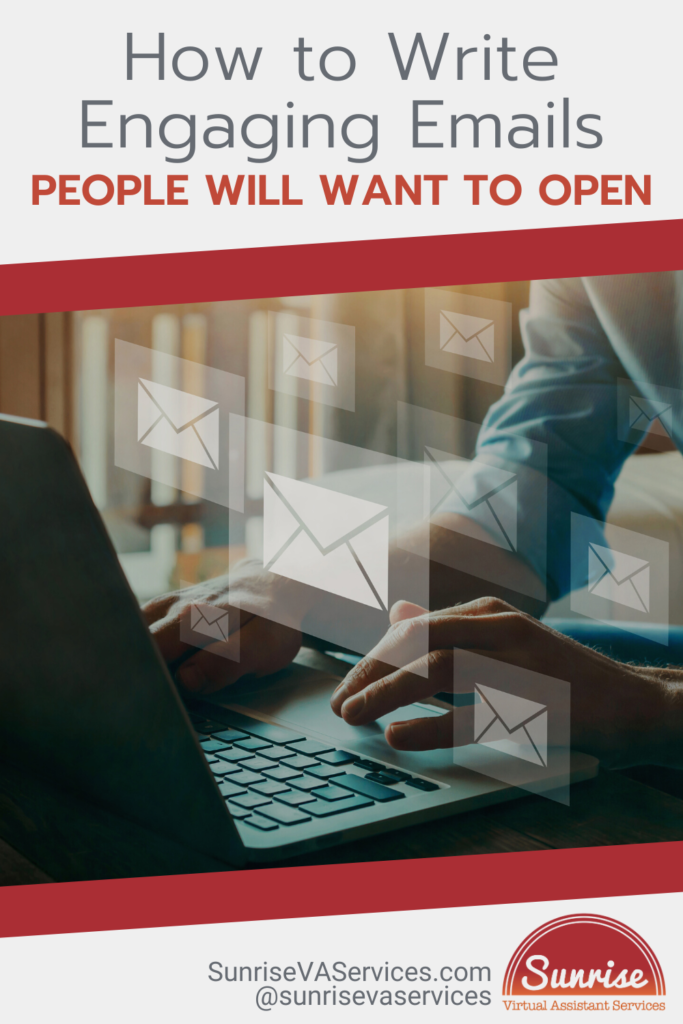When was the last time you got engaging emails that caught your attention and excited you to open them? With the average person receiving around 100 business-related emails daily, writing engaging emails that people want to open and read is becoming increasingly imperative. In today’s digital age, emails serve as a crucial tool for communication and can make or break your reputation.
Writing compelling email content is a skill that can significantly impact your ability to communicate effectively with your audience. Studies show that businesses with solid email marketing strategies have higher engagement rates and increased revenue. On the other hand, poorly written and uninteresting emails often lead to disinterest and a decline in conversion rates.
So, what’s the secret to crafting engaging emails that your audience actually wants to open? In this article, we’ll break that answer down into a few crucial components for crafting the marketing emails, starting with catchy subject lines.
Writing Engaging Emails: Subject Lines
One of the critical aspects of a successful email is the subject line. The subject line is the first thing the reader sees, leaving them with a lasting impression of what the email is all about. Below are some tips on how to write engaging email subject lines that will make people want to open the email.
Personalization is Key
One of the most effective ways to create an engaging email subject line is by including personalization. Research has shown that great emails with personalization have an incredible 29% higher unique open rates than non-personalized ones.
Personalization can be achieved by addressing the email recipients by name or tailoring the subject line to their interests or needs. It’s important to note that segmenting the mailing list based on demographics or behavior is essential to achieving an effective personal touch. So if you aren’t segmenting your mailing list, you should do so!
That being said, with proper personalization and a good subject line, the reader will feel like the email was written just for them, and there will be a higher chance of these email subscribers opening and reading professional emails.
Use Power Words and Emotional Triggers
Another way to write a great subject line is using power words and emotional triggers. Power words are strong, impactful words that compel the reader to take action, while emotional triggers tap into the reader’s emotional state to create a connection. Using this kind of language in the email’s subject line will also go a long way in making your emails stand out among the rest.
Power words include “limited time offer,” “how-to,” and “guaranteed,” while emotional triggers include “urgent,” “curiosity,” and “fear of missing out (FOMO).” Using effective power words and emotional triggers in a compelling subject line will motivate the reader to open the email and take action from the conveyed sense of urgency.
These kinds of words are highly effective in a first contact welcome email, especially if there is an incentive to follow through on a call to action (more on this later).
Avoid Common Mistakes
Businesses make several common mistakes when crafting email subject lines that reduce the chances of them being opened or read.
- Avoid using spam trigger words that send the email straight to the spam folder, such as “buy now,” “discount,” and “earn money.”
- Avoid using vague subject lines that do not give the reader an idea of what the email is about. Subject lines such as “Hey there” or “Important news” without an accompanying detail will not excite the reader.
- Avoid using all caps or exclamation marks, as this makes it look like the email is shouting at the reader. Remember the howlers from Harry Potter? That’s kind of what reading in all caps is like.
Want more tips on writing the perfect subject line? Check this out…
Writing Engaging Emails: Content
One of the most effective ways to engage with your audience is by personalizing the body of your email content. Speak directly to each recipient and make them feel like they are part of a conversation with you.
If relevant, use their name, past purchase history, or other relevant information to tailor the message to their needs and interests. This will show that you care about your audience and are invested in their success. Plus, it’s a great way to show your own brand personality and brand voice.
The language and tone you use in your emails can significantly impact their effectiveness. Write in a conversational yet professional way, and use clear and concise language. Avoid using too much jargon or complex terms your target audience may not understand. Instead, focus on creating a message that is both compelling and easy to understand for anyone, industry expert or not.
The content of your email should provide value to your audience. This could be in the form of educational content, industry news, special offers, or relevant tips and tricks. Make sure that your message is relevant and valuable and that it provides tangible benefits to your subscribers; otherwise, what’s the point of reading the email?
When your audience feels that they are getting something of value from your emails, they are more likely to stay engaged and take the action you want them to take.
More tips on dynamic content
Every email you send should have a clear call-to-action (CTA). This could be to purchase a product, sign up for a newsletter, or take any other desired action. Your CTA should be prominent and easy to find and clearly communicate what the reader should do next.
Make sure that the goal of your emails CTA is aligned with your overall business objectives and that it is specific and actionable. Some examples of this could be lead traffic to a landing page or blog post, signs ups for a service, or sales.
Visuals can be a powerful tool for enhancing your email content and making it more engaging. Use images, infographics, or videos to illustrate your message and make it more memorable. Make sure that your visuals are high-quality and relevant to your message and that they are used to support the overall tone and messaging of your email.
Finally, it is important to test and analyze your email marketing campaigns to determine what works and what doesn’t. Use split testing (or, A/B testing) to try out different subject lines, messaging, and CTAs, and track the performance of your emails with your subscriber list over time. Use this data to make informed decisions about your email content and to continually improve its effectiveness.
In conclusion, writing engaging email content that leads to conversions requires a combination of creativity and strategy. By following these tips and crafting a message that is tailored to your audience, you can create effective email content that drives growth, engagement, and success for your business.
Support for email marketing
No matter how you cut it, email marketing is a crucial tool for businesses to connect with their audience and drive sales. However, crafting effective email campaigns requires strategy, compelling content, and meticulous management. That’s where Sunrise Virtual Assistant Services comes in. Our team of seasoned professionals can help you develop a solid email marketing strategy tailored to your unique business goals, create engaging content that resonates with your audience, and manage your campaigns with precision and care. Contact us today to learn more about how we can elevate your email marketing efforts and help you succeed in the online marketplace.


